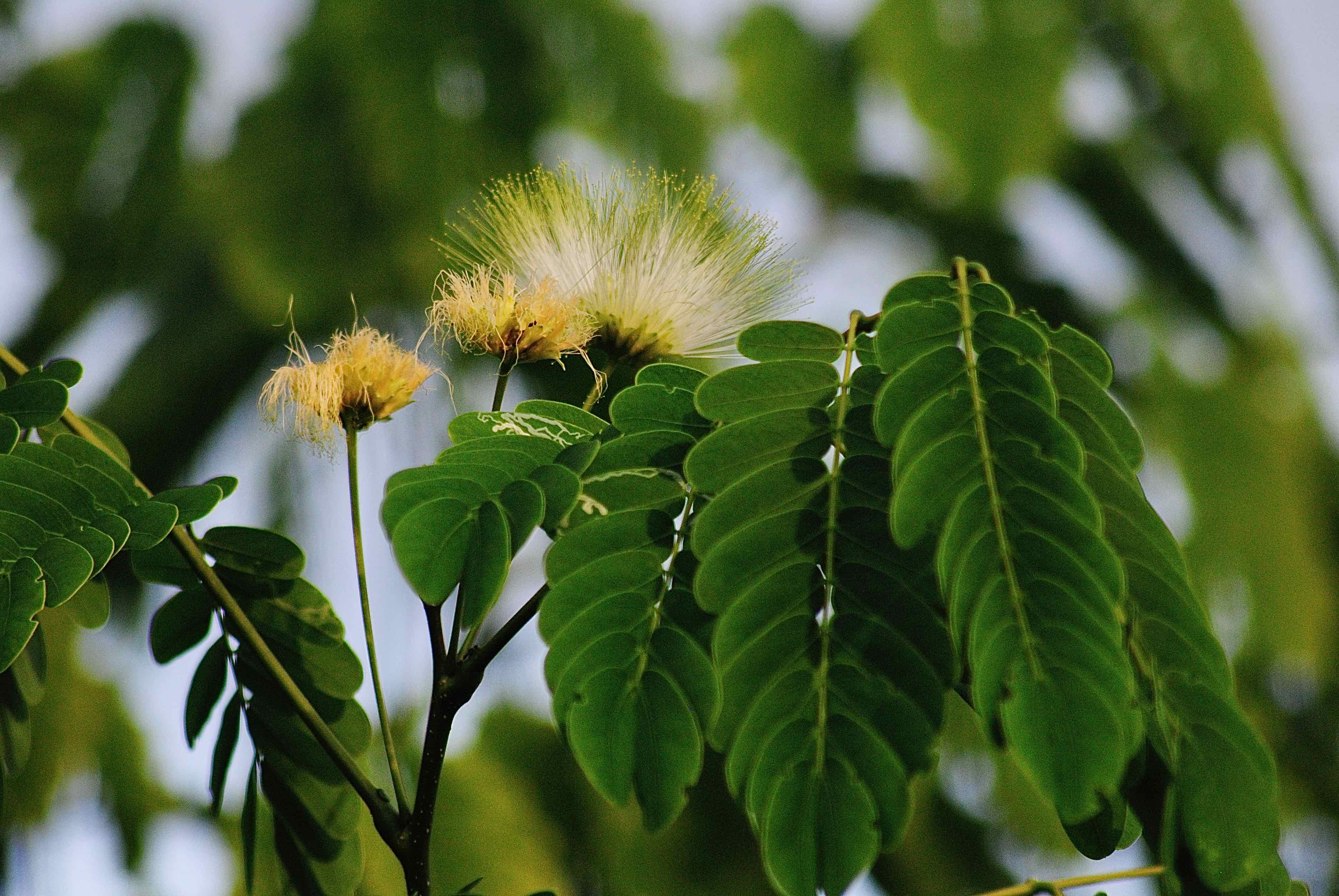
Woman's tongue, photographed in western Delray Beach, Palm Beach County, in July 2014.
Woman’s tongue, Albizia lebbeck, is a big deal in its home range of Southeast Asia, useful in myriad ways. Here in Florida, it’s a titanic pain in the butt, invading some of the region’s rarest and most sensitive habitats.
Which is why the Florida Invasive Species Council, (formerly the Florida Exotic Pest Plant Council) classified woman’s tongue as a Category 1 invasive back in 1999. But it’s not just a problem here in the Sunshine State. It’s become a pest pretty much everywhere it’s been introduced around the globe, earning a spot among the 100 most serious invasive species in the world.
Woman’s tongue has a long history in Florida, introduced here in the 1880s and finding its way into the wild not long afterwards.
It is a beautiful tree, which is why it was brought here 140-plus years ago. As for the name, we’re not sure of its origins or whether the name is intended to be complimentary, reflecting its good looks, or derogatory, possibly reflecting the tree’s rattling seed pods, or something else entirely.
Like many plants with global distributions, it seemingly has a zillion common names, but woman’s tongue seems to be the most commonly used common name. For what it’s worth, the Invasive Species Compendium’s preferred name is Indian siris.
Its range in Florida extends as far north as Marion County, but it’s primarily found in coastal counties as far north as Brevard, south into the Keys along the Atlantic and as far north as Pinellas along the Gulf.
Beyond Florida, woman’s tongue is naturalized in one county in central Texas, in California and Hawaii.
Its natural range is a little difficult to pinpoint because it is so widely cultivated, but it probably extends through Pakistan, Nepal, India, Myanmar, Malayasia, Indonesia and northern Australia. Its been exported to parts of Africa, Central America, South America, the Caribbean and Pacific islands. It’s also an invasive pest in many of those places.
Woman’s tongue is a fairly tall tree, typically reaching 60 feet but capable of approaching 100. It’s usually has multiple trunks but can have only one. The bark is gray, corky and flaky. The leaves are twice compound, meaning the leaflets are made of leaflets, and arranged alternately along the stem. It is deciduous, meaning it will drop its leaves for a short period.
The flowers are tiny but appear in large, attractive clusters characterized by a zillion or so yellow to yellow-cream colored whispy stamin, which resemble long, luscious eye lashes. At least it does to us. Your mileage may vary.
Ultimately, the flowers give way to a foot-long pod filed with seeds. The pods turn straw-colored to brown when ripe and rattle in the wind. Eventually, they split open and release their content.
Woman’s tongue is a veritable chemical plant, producing alkaloids, flavonoids, saponins, and terpenoids, which have anti-inflammatory, antimicrobial, antioxidant, antiparasitic, antipyretic (prevents or reduces fevers), antivenom, and wound healing properties and a whole bunch more.
In Asia, particularly in India, traditional medicines use virtually every part of the tree to extract these chemicals to treat myriad medical conditions, including tumors, migraines, conjuctivitis, diarhhea, asthma, snake bites, insect bites, depression, leprosy, skin problems and more. Researchers have found at least some preliminary evidence supporting the use of woman’s tongue as a treatment for a few of these problems, but way more research is needed.
The tree is also used for lumber and fuel, to prevent erosion, for shade and to improve soil — woman’s tongue can fix nitrogen to the soil with the help of some bacteria friends.
The problem with woman’s tongue begins with those large pods, each of which can have as many as 12 seeds. The tree produces large amounts of seeds.
On top of that, woman’s tongue can reproduce by suckering — new trees that arise from the roots of the parent tree. Add in woman’s tongue tolerance for a wide range of habitats and soils, lack of natural enemies and you have the makings of an invasive. It can literally take over large swaths of land with dense stands that block out native plants.
In Florida, it’s a particular problem in the Keys, where it invades tropical hammocks, in Miami-Dade, where pine rocklands and rockland hammocks are vulnerable. All three are rare habitat types, as are the native plants and animals that make their homes there.
Other common names for woman’s tongue include lebbeck tree, flea tree, frywood, Tibet lebbeck, shake-shake and koko. It is a member of Fabaceae, the pea family.



